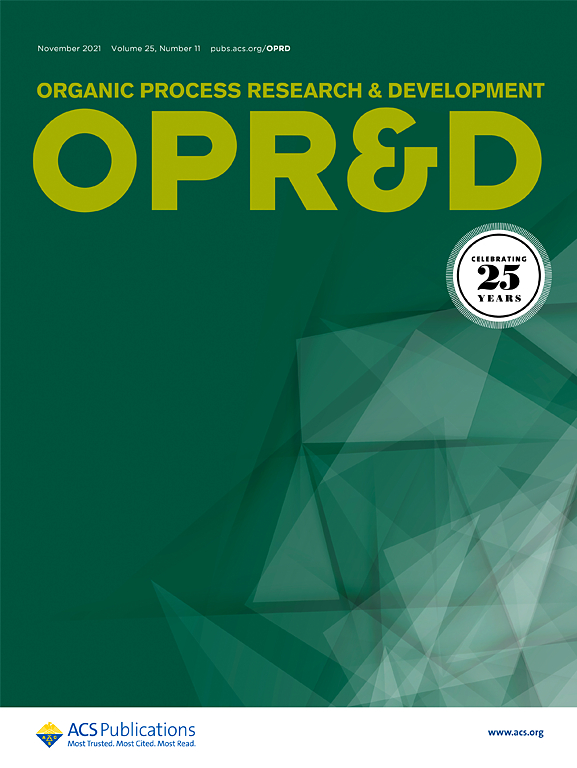利用浸没井反应器提升间歇光氧化还原交叉偶联反应
IF 3.1
3区 化学
Q2 CHEMISTRY, APPLIED
引用次数: 18
摘要
在这里,我们描述了一种简单的方法,将光氧化还原交叉偶联反应从毫克级扩大到多克级,使用浸入式间歇反应器,对反应条件进行最小的再优化。这种方法既适用于均相反应,更重要的是,也适用于非均相反应混合物。此外,我们还使用了浸没井侧环反应器在400 mmol (86 g芳基溴)的规模上进行反应。本文章由计算机程序翻译,如有差异,请以英文原文为准。

Upscaling Photoredox Cross-Coupling Reactions in Batch Using Immersion-Well Reactors
Herein we describe a straightforward approach for the scale-up of photoredox cross-coupling reactions from milligram to multigram scale using immersion-well batch reactors with minimal reoptimization of the reaction conditions. This approach can be applied to both homogeneous and, more significantly, heterogeneous reaction mixtures. Furthermore, we have used an immersion-well side-loop reactor to perform a reaction on a 400 mmol scale (86 g of aryl bromide).
求助全文
通过发布文献求助,成功后即可免费获取论文全文。
去求助
来源期刊
CiteScore
6.90
自引率
14.70%
发文量
251
审稿时长
2 months
期刊介绍:
The journal Organic Process Research & Development serves as a communication tool between industrial chemists and chemists working in universities and research institutes. As such, it reports original work from the broad field of industrial process chemistry but also presents academic results that are relevant, or potentially relevant, to industrial applications. Process chemistry is the science that enables the safe, environmentally benign and ultimately economical manufacturing of organic compounds that are required in larger amounts to help address the needs of society. Consequently, the Journal encompasses every aspect of organic chemistry, including all aspects of catalysis, synthetic methodology development and synthetic strategy exploration, but also includes aspects from analytical and solid-state chemistry and chemical engineering, such as work-up tools,process safety, or flow-chemistry. The goal of development and optimization of chemical reactions and processes is their transfer to a larger scale; original work describing such studies and the actual implementation on scale is highly relevant to the journal. However, studies on new developments from either industry, research institutes or academia that have not yet been demonstrated on scale, but where an industrial utility can be expected and where the study has addressed important prerequisites for a scale-up and has given confidence into the reliability and practicality of the chemistry, also serve the mission of OPR&D as a communication tool between the different contributors to the field.

 求助内容:
求助内容: 应助结果提醒方式:
应助结果提醒方式:


